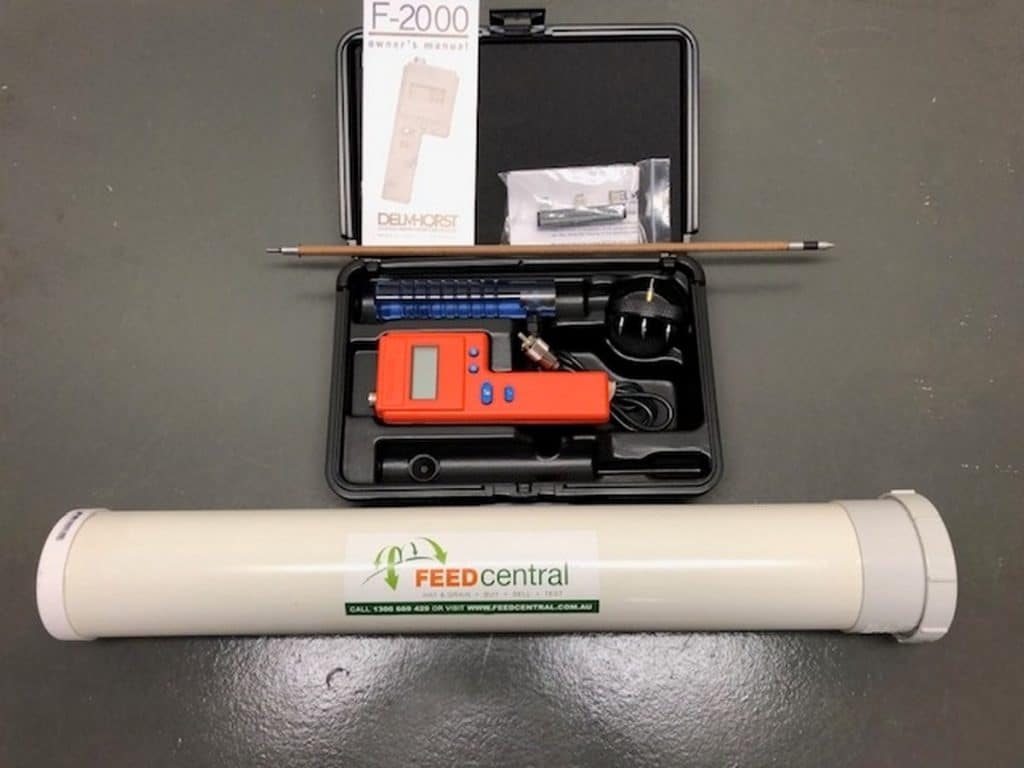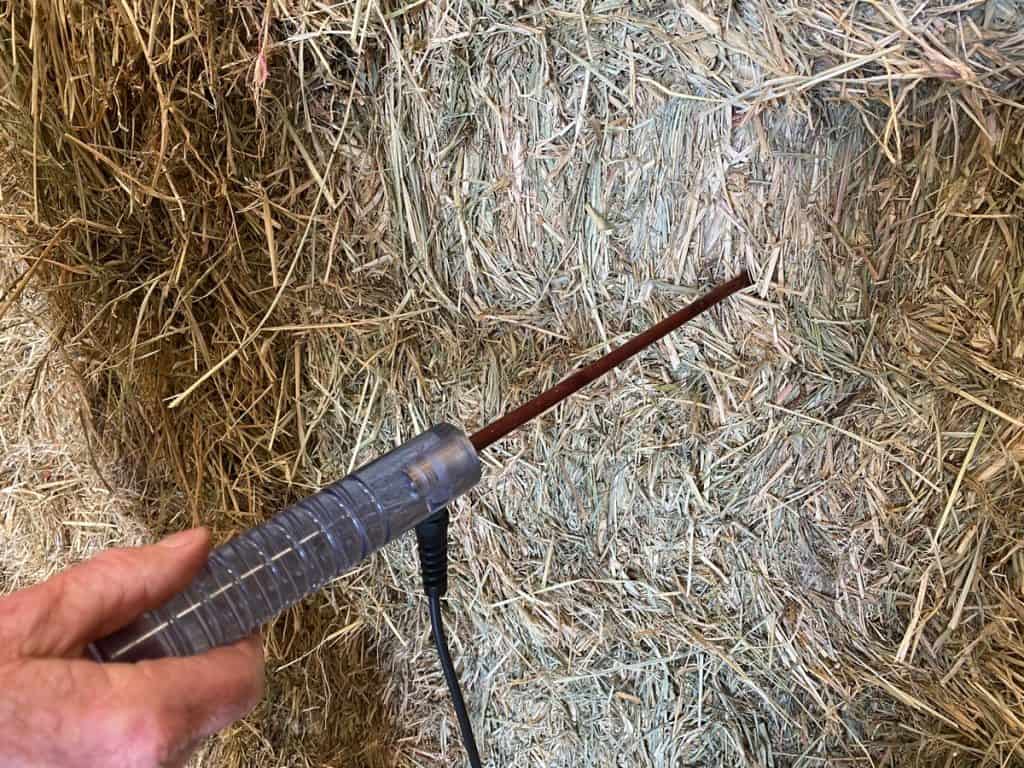What is the nutrient value of your hay bales? This isn’t something you can just guess by eyeballing it. Rather, farmers will rely on a qualified system of measurement by using a hay testing probe. What is a hay probe?
A hay probe is a metal rod that is used to insert into hay bales to test the moisture content of hay bales.
This article will tell you everything you need to know about hay testing probes, including what they are, how you use them, and whether you can make your own. If you’re just beginning to test the nutritional content of your hay, then keep reading!
What Is A Hay Probe?

The hay you harvest is for sale. How do you promote the hay to your customers without knowing all the information you can on it?
A hay testing probe often called a moisture meter is a long instrument that’s usually made of metal. The probe features a tube with a pointed end that can enter into even tough bales of hay. The goal of using the testing probe is to produce representative samples.
Livestock has differing nutritional needs. If an animal requires more protein than certain minerals or vice-versa, you should have various kinds of hay to sell.
This is where a hay probe comes into play. As we touched on in the intro, you can use the probe to collect hay samples for nutrient testing.
Admittedly, a hay testing probe is an investment. We recommend this Hay Probe or Moisture Meter.
Due to the heavy-duty construction of a hay testing probe, you can count on having yours for a good, long time, especially if you use it properly.
How Do You Test a Hay Sample?
You must use a hay testing probe to get a nutritional analysis of your hay. Here are the steps to do that.
Step 1 – Choose the Hay
One representative sample is not going to paint a clear enough picture of the nutritional content of your bales. You should select several bales from one lot.
The hay should have been harvested in the same field and ideally on the same day. It should come from one cutting. The number of weeds or grass is the same from one bale to another. All hay must be in the same maturity stage as well.
If the hay incurred rain damage or other moisture damage, then that damage should be spread out evenly among all the samples. The same would be true if the hay has suffered from mold or mildew damage.
The bales should be chosen at random, so avoid testing two adjacent bales.
Step 2 – Insert Your Hay Testing Probe
Take your hay testing probe and push it into the hay as deep as you can go.

Admittedly, this task can be difficult at times. For example, if the hay bale has matured, the hay can be surprisingly unyielding.
If your hay bale is wet and you try testing it, you may also struggle to get the probe in there.
What some farmers do at that point is use a cordless drill to insert a hole into the hay bale for testing. This portion of the hay will be unsaleable, but that’s okay, as you need it for your representative sample.
Where you test in the hay bale matters. For a standard two-string rectangular hay bale, select one end and insert the hay probe through the middle.
This video explains how to use a hay probe.
See the full range of feed testing videos on our page on How to test hay.
Step 3 – Use a Bale Core Sampler (if you want more accurate tests)
For the best results when testing hay bales, you should use a bale core sampler in addition to the probe. A bale core sampler is a tool that reduces the risk of contamination. Having the sampler can make for more accurate testing.
You can read all about Hay Corers here. Its length should be between 12 and 18 inches with an internal diameter of 3/8 inches or greater.
You can use a hand brace or a variable-speed half-inch drill with a bale core sampler. These tools will allow you to insert the pointed end of the bale core sampler into the hay.
Grab one of hay corers in stock now.
As you did with your hay probe, you want the bale core sampler deep into the hay right in the middle of the bale. Position the bale core sampler at a right angle.

Can You Make Your Own Hay Probe? How?
Perhaps your last harvest of hay was rain-soaked and thus not that profitable. You’re not going to meet your sales projection for the month or maybe even the quarter. You’d like to pinch your pennies as much as you can.
There’s just no room for a hay testing probe in the budget right now. Can you make your own rather than buy one?
Some especially inventive farmers have made a DIY hay testing probe using a golf club in good condition. You need a hacksaw to slice the club shaft at a diameter of 3/8 inches to ½ an inch.
We don’t recommend trying to make one as we have found the results it produces are very inaccurate.
Conclusion – What Is A Hay Probe?
A hay testing probe is a tool for taking moisture readings and is sometimes called a moisture meter.
Now that you know how to take hay samples, you can learn more about the hay on your farm!